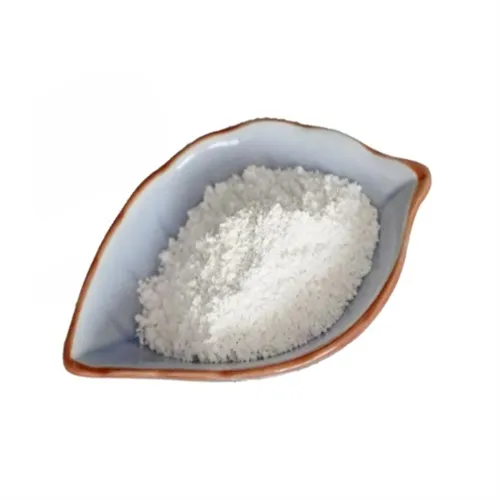Warning: Undefined array key "title" in /home/www/wwwroot/HTML/www.exportstart.com/wp-content/themes/1198/header.php on line 6
Warning: Undefined array key "file" in /home/www/wwwroot/HTML/www.exportstart.com/wp-content/themes/1198/header.php on line 7
Warning: Undefined array key "title" in /home/www/wwwroot/HTML/www.exportstart.com/wp-content/themes/1198/header.php on line 7
Warning: Undefined array key "title" in /home/www/wwwroot/HTML/www.exportstart.com/wp-content/themes/1198/header.php on line 7
- Afrikaans
- Albanian
- Amharic
- Arabic
- Armenian
- Azerbaijani
- Basque
- Belarusian
- Bengali
- Bosnian
- Bulgarian
- Catalan
- Cebuano
- China
- China (Taiwan)
- Corsican
- Croatian
- Czech
- Danish
- Dutch
- English
- Esperanto
- Estonian
- Finnish
- French
- Frisian
- Galician
- Georgian
- German
- Greek
- Gujarati
- Haitian Creole
- hausa
- hawaiian
- Hebrew
- Hindi
- Miao
- Hungarian
- Icelandic
- igbo
- Indonesian
- irish
- Italian
- Japanese
- Javanese
- Kannada
- kazakh
- Khmer
- Rwandese
- Korean
- Kurdish
- Kyrgyz
- Lao
- Latin
- Latvian
- Lithuanian
- Luxembourgish
- Macedonian
- Malgashi
- Malay
- Malayalam
- Maltese
- Maori
- Marathi
- Mongolian
- Myanmar
- Nepali
- Norwegian
- Norwegian
- Occitan
- Pashto
- Persian
- Polish
- Portuguese
- Punjabi
- Romanian
- Russian
- Samoan
- Scottish Gaelic
- Serbian
- Sesotho
- Shona
- Sindhi
- Sinhala
- Slovak
- Slovenian
- Somali
- Spanish
- Sundanese
- Swahili
- Swedish
- Tagalog
- Tajik
- Tamil
- Tatar
- Telugu
- Thai
- Turkish
- Turkmen
- Ukrainian
- Urdu
- Uighur
- Uzbek
- Vietnamese
- Welsh
- Bantu
- Yiddish
- Yoruba
- Zulu
nóv . 05, 2024 20:05 Back to list
exploring the benefits and uses of xanthan gum ...
Exploring the Benefits and Uses of Xanthan Gum
Xanthan gum is a versatile, naturally occurring polysaccharide that has found a plethora of applications across various industries due to its unique thickening, stabilizing, and emulsifying properties. Naturally produced by the bacterium *Xanthomonas campestris* through fermentation, xanthan gum is widely recognized for its ability to improve the texture, consistency, and overall quality of numerous products. This article will explore the benefits of xanthan gum and its diverse uses in food, pharmaceuticals, cosmetics, and other sectors.
Benefits of Xanthan Gum
One of the primary benefits of xanthan gum is its thickening properties. It can create a gel-like consistency in liquids, making it an ideal ingredient in sauces, dressings, and various culinary applications. This thickening power is particularly beneficial for gluten-free formulations, where xanthan gum acts as a replacement for gluten to help maintain structure and improve mouthfeel in baked goods.
Xanthan gum also has excellent stabilizing capabilities. It helps to prevent the separation of ingredients in emulsions, which is crucial in products like salad dressings and mayonnaise. By stabilizing these mixtures, xanthan gum enhances the shelf stability of food products and ensures that consumers enjoy a consistent experience with each use.
Another significant advantage of xanthan gum is its ability to enhance the viscosity of solutions without the need for high concentrations. This property means that only a small amount of xanthan gum is necessary to achieve the desired thickness, making it a cost-effective choice for manufacturers. Additionally, xanthan gum is stable under a wide range of temperatures and pH levels, allowing for its use in various conditions without losing effectiveness.
Moreover, xanthan gum is known for its health benefits. As a soluble dietary fiber, it can aid in digestion and promote gut health. It has also been studied for its potential to lower blood sugar levels and improve cholesterol profiles, making it an appealing ingredient for health-conscious consumers. Due to its low-caloric nature, xanthan gum is often used in weight management products, giving bulk without significant calories.
exploring the benefits and uses of xanthan gum ...

Uses of Xanthan Gum
The uses of xanthan gum span a broad spectrum of industries. In the food industry, it is commonly found in salad dressings, sauces, soups, gluten-free baked goods, ice creams, and beverages. In each of these applications, xanthan gum plays a crucial role in enhancing texture and ensuring product quality.
In the pharmaceutical realm, xanthan gum serves as a binder and thickener in tablet formulations and liquid medications. Its ability to maintain stability and texture makes it a valuable ingredient in the production of gels and ointments, providing a consistent delivery mechanism for active ingredients.
Xanthan gum is also prevalent in the cosmetics and personal care industry. It is used in lotions, creams, and shampoos as a thickener and stabilizer, helping to achieve the desired viscosity and improve the sensory experience of these products. Furthermore, its emulsifying properties contribute to the overall effectiveness of skin and hair care formulations.
In the industrial sector, xanthan gum is employed in oil drilling, where it helps to stabilize drilling fluids and enhance the viscosity of the slurry. Additionally, it is used in agrochemicals and as a thickening agent in paints and coatings.
Conclusion
Xanthan gum stands out as a multifunctional ingredient with a wide range of benefits and applications. Its unique properties allow it to improve the texture and stability of food products, enhance pharmaceutical formulations, and provide thickening and emulsifying functions in personal care items. As consumers continue to seek healthier, gluten-free, and clean-label options, xanthan gum will likely remain a popular choice across various sectors. Its ability to meet the growing demand for quality ingredients emphasizes its importance in modern product development and formulation.
Latest news
-
Certifications for Vegetarian and Xanthan Gum Vegetarian
NewsJun.17,2025
-
Sustainability Trends Reshaping the SLES N70 Market
NewsJun.17,2025
-
Propylene Glycol Use in Vaccines: Balancing Function and Perception
NewsJun.17,2025
-
Petroleum Jelly in Skincare: Balancing Benefits and Backlash
NewsJun.17,2025
-
Energy Price Volatility and Ripple Effect on Caprolactam Markets
NewsJun.17,2025
-
Spectroscopic Techniques for Adipic Acid Molecular Weight
NewsJun.17,2025

